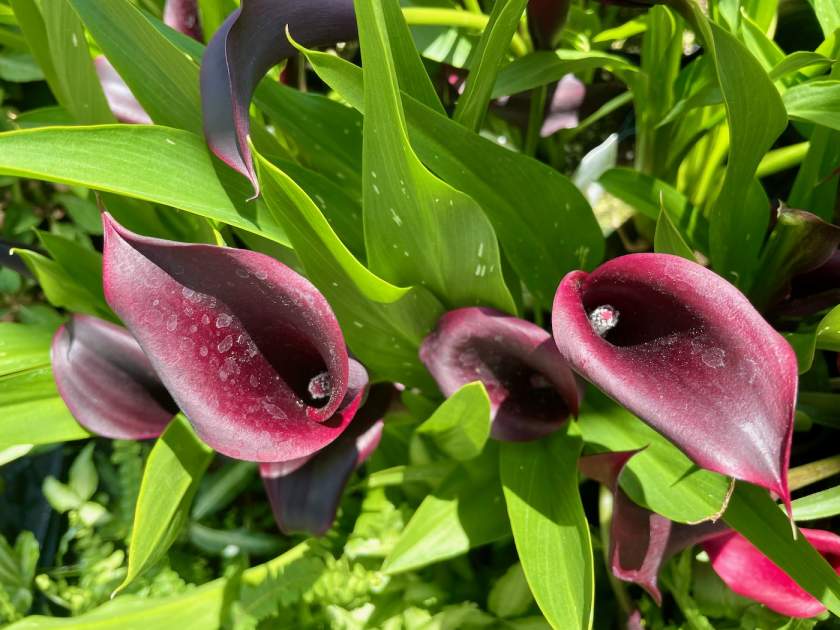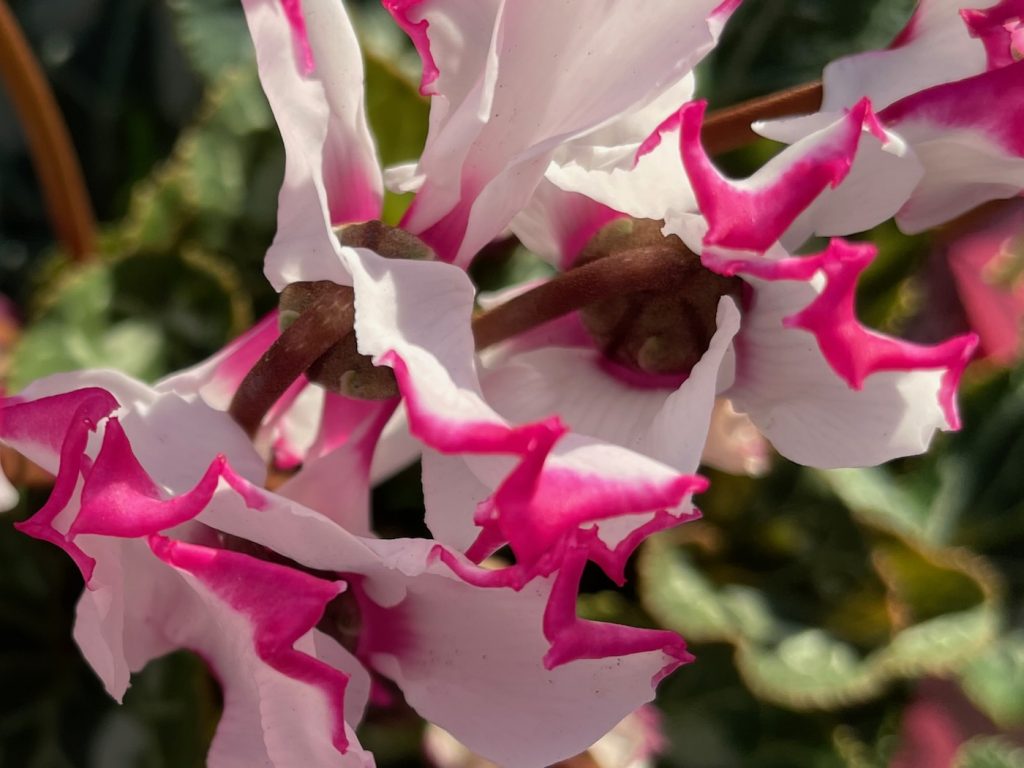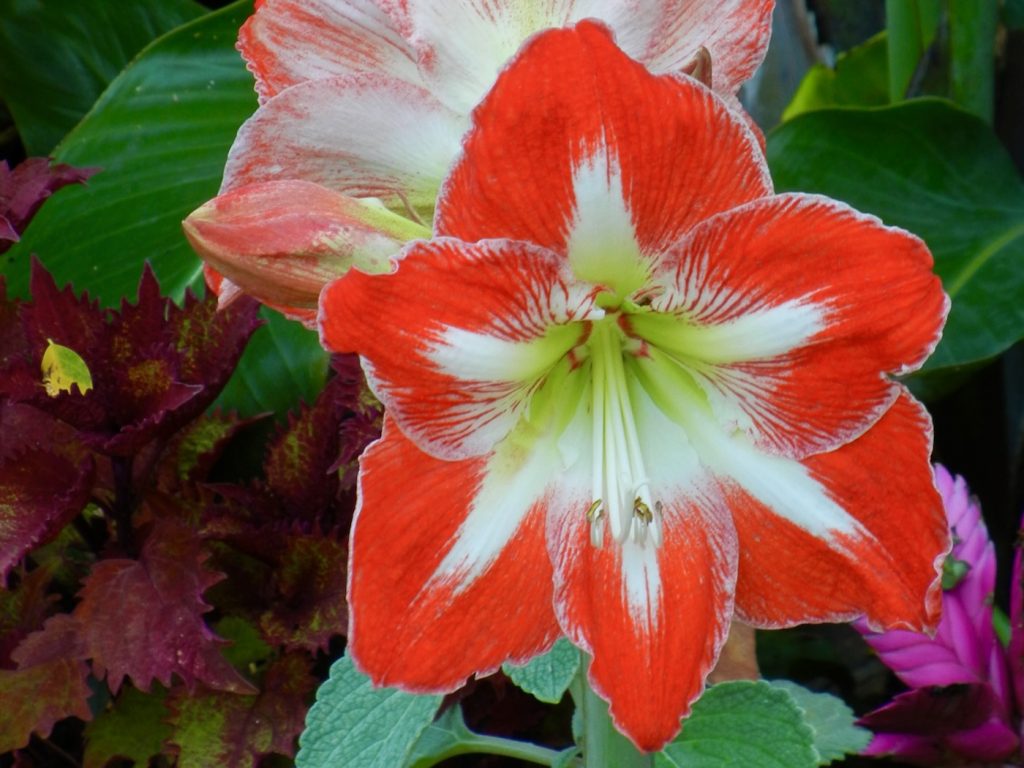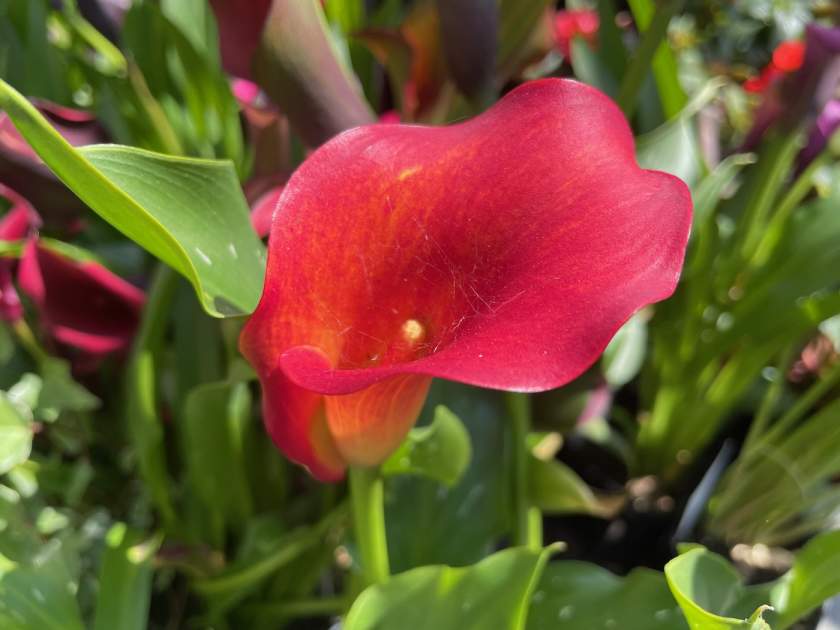Zantedeschia ‘Black’: The Enigmatic Beauty with Dark Floral Charms
Zantedeschia ‘Black’, commonly known as Black Calla Lily is a captivating flowering perennial in the Araceae family. Native to South Africa, this plant showcases trowel-shaped foliage that emerges from the tuber in the fall, forming an attractive clump that remains green throughout the winter.
The dark purplish-black spadix, encased in a purplish-black spathe, emerges in spring, creating a striking contrast against the light green exterior of the spathe. While the flowers themselves are not fragrant, the plant releases the odor of rotting fruit to attract flies, which serve as pollinators. As the season progresses, the berry-like fruits transition from green to a vibrant shade of red. During the summer, the plant enters a dormant phase.
Zantedeschia ‘Black’ is not technically a bulb but rather a tuberous perennial plant. The tuber is a storage organ that allows the plant to survive adverse conditions and regrow in the following season. Similar to bulbs, tubers store nutrients and energy for the plant’s growth and flowering. In the case of Zantedeschia ‘Black’, the tuber is responsible for producing new shoots and foliage each year.
Cultivation of Zantedeschia ‘Black’:
Sunlight: Finding the Perfect Exposure
Zantedeschia ‘Black’ thrives in a wide range of light conditions, from full sun to partial shade. It adapts well to different light intensities, although the best flowering results are achieved with more sunlight. When grown in areas with scorching summers, providing some shade during the hottest parts of the day can help protect the foliage from sunburn and maintain its overall health.
Watering: Balancing Moisture Levels
This perennial plant has moderate watering needs. It requires regular watering to establish a healthy root system but should not be overwatered. Aim for a balance by allowing the soil to dry out slightly between waterings. During the dormant period in summer, reduce the frequency of watering to match the plant’s reduced growth.
Soil: Well-Drained and Versatile
Zantedeschia ‘Black’ is adaptable to different soil types as long as they offer excellent drainage. It thrives in loamy or sandy soils that provide good drainage. Ensuring the soil retains some moisture without becoming waterlogged is crucial for the plant’s health and growth. Adding organic matter, such as compost, can help improve soil structure and fertility.
Pest and Disease Management: Staying Vigilant
While Zantedeschia ‘Black’ is generally a resilient plant, it can still face some challenges. It may be prone to pests such as slugs and snails. Regular inspection and prompt removal of these pests can help prevent damage. Additionally, the plant’s toxic nature makes it unappealing to most animals, including deer. However, it is important to note that the plant contains oxalate salts, which can cause irritation if ingested, so it is crucial to keep it away from children and pets.
Propagation: Division and Seed Sowing
Zantedeschia ‘Black’ can be propagated through division or seed sowing. Dividing the plant every 3-4 years helps maintain its health and prevent overcrowding. This process involves carefully separating the tubers and replanting them in well-prepared soil. Alternatively, the plant can be propagated from seeds, although this method may be less reliable. Sow the seeds in spring or fall, ensuring they are planted at the appropriate depth and provided with suitable growing conditions.
Zantedeschia ‘Black’: A Captivating Enigma
Zantedeschia ‘Black’, with its dark floral allure and enigmatic presence, adds a touch of mystery to any garden or landscape. With its unique foliage and captivating flowers, it is sure to become a focal point of admiration. While its care requirements are relatively low, it is important to keep in mind its toxic properties and invasive potential. By providing optimal growing conditions and regular maintenance, you can enjoy the alluring beauty of Zantedeschia ‘Black’ and appreciate its intriguing presence in your outdoor spaces.
Zantedeschia




